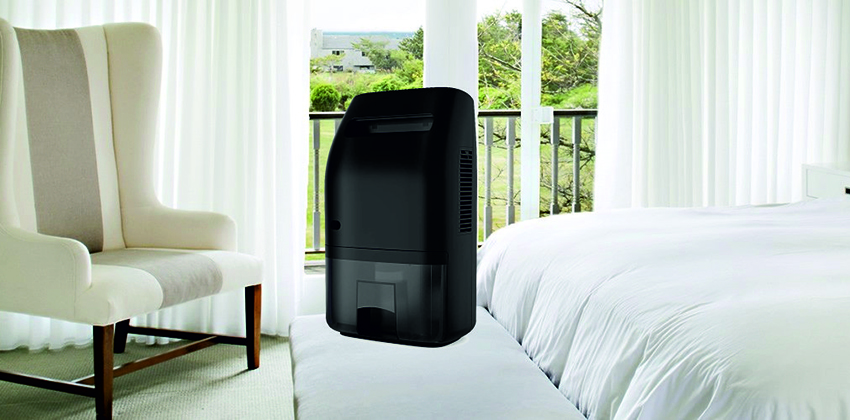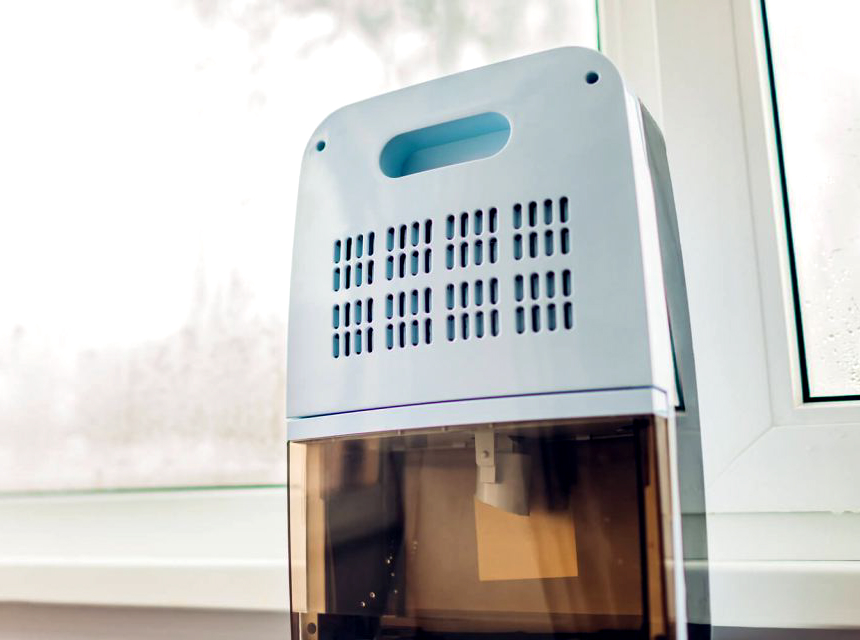

High levels of humidity are not only uncomfortable but also destructive. Not only can you fee like you’ve just stepped out of the shower, but too much moisture in the air can destroy wooden furniture. Whether you live in a naturally humid part of the world or your home has been unexpectedly flooded, it’s important to learn how to dehumidify a room. There are many ways to dehumidify a room including appliances and natural resources. You can try these different methods on their own or combine them for a more thorough approach. Remove the excess moisture from the air so you can breathe easier and protect your valuables at the same time.
The first step to control the humidity level in your home is to first detect what the level is. To do so, you can purchase a hygrometer. This is a relatively inexpensive item that will tell you the humidity level in a room, in the form of a percentage. The ideal humidity level for summer months is 40 to 50% while winter months should be lower, at about 30 to 40%.
The first step to dehumidifying a room is to try all your natural remedies. These are practices that don’t cost any money and are therefore the perfect first step to take. Thankfully, learning how to dehumidify a room without electricity is quite simple.
While this solution will cost a bit of money, it is still a fairly inexpensive way to avoid high humidity in your room. You can purchase moisture-absorbing materials from any home improvement store. These materials include silica gel, clay absorbers, and calcium chloride.
Silica gel works to absorb moisture in the air but it is not powerful enough for large spaces such as a basement. You will also need to place it in a water-proof container as it can start to leak water if the temperature is too high.
Clay absorbers can be found in the form of bricks. These do not absorb that much moisture, however, and usually need to be supplemented with other devices to decrease your humidity levels.
Calcium chloride is perhaps the most effective at removing moisture from the air. To make it even more beneficial, you can use a fan to propel the moist air towards a container of calcium chloride. Just be ware that this is a very dangerous chemical and should be kept out of the way of children.
Again, think about the causes of your high humidity. Do you enjoy taking really long hot showers? If so, either shorten your shower or make sure you turn the bathroom fan on at all times. Do you need to hang your clothes to dry inside? What about stringing them outside or using a dryer machine?
If the high humidity in your room is a result of your behaviors, you have the ability to change those and make a difference.
The best way to understand what the causes of the high humidity in your room are is to make a daily observational journal. Start with when you wake up. Look at the windows to see if there is any condensation. Observe what happens after your shower. If you have a hygrometer to measure humidity levels, take readings throughout the day. Check to see what happens as you cook various meals.
Once you have all the data, you will be able to have a complete picture of when the humidity in your room is the highest and what is causing it. Then, you can come up with a plan of action.
When you take a shower, are you able to see yourself in the mirror afterwards? If not, it means that the shower was really hot, and probably long. All the increased moisture from your shower has now entered the air, increasing the humidity.
To combat this, try to take shorter, colder showers. Even altering the temperature by just a few degrees can greatly lessen the amount of humidity in your room.
Humidity is a result of extra moisture in the air and if you can understand where that moisture originates from, you can help stop it. Cooking, such as boiling water for pasta, will release moisture into the air. If you hang your clothes to dry inside, that moisture from the wet clothes has to go somewhere.
When you engage in activities, such as cooking or doing laundry, try to open the windows while you’re at it. This can be hard to do in cold winter months, but in spring, fall, and summer, opening windows allows the moisture to escape, lessening the humidity in your own home.
The only exception to this is during really hot, humid months in the summer. If the outside air has a higher humidity level, then opening the window and letting that air inside will not help your room’s humidity.
After you’ve tried some basic behavioral changes to decrease the humidity in your room you can move on to dehumidifying appliances. These can be a bit expensive but the good news is they last a long time and can help with any humidity issues in the future.
A dehumidifier is the best appliance to start with if you want to dehumidify a room. Dehumidifiers work by separating moisture from the air. Some come with settings so you can ensure your air has the ideal humidity levels.
Set your ideal humidity level, such as 40 to 50% in summer and 30 to 40% in winter. Then, your dehumidifier will automatically turn on if it senses these levels are increasing.
The biggest thing to take note of with a dehumidifier is that you will need to empty the water tank. As air passes through and water is collected. This tank may need to be emptied up to once a day, depending on your humidity level.
Hopefully, most people know to run their bathroom fan while in the shower but not many people know just how long to dehumidify a room for. Moisture will still be in the air after your shower, so you should actually continue to run a fan for another 20 minutes.
The same goes if you have a fan running while cooking. Keep the fan even after that pot of water has boiled.
It’s even a good idea to keep your ceiling fan on throughout the day. This will help keep the air circulated, decreasing the humidity. If you have a floor fan, position it near a window to keep the air flowing out.
Thanks to ever-evolving technology, most air conditioners have a de-humidifying capability. Set your air conditioner to a comfortable temperature. If possible, also program the dehumidifier to come on at a certain percentage. The device will monitor the air and turn on when levels become too high.
Winter months can still bring high levels of humidity inside your home. This is because doors and windows are closed and moisture has nowhere to escape. If you wake up in the morning with condensation, or even frost, on the inside of your windows, it means there is too much humidity in your room.
To combat this, try using a space heater. If a space heater gives off dry heat, then it won’t contribute to the humidity level in your room.
There are many ways to dehumidify a room, both naturally and with the help of appliances. The first step is to understand where the source of the extra humidity is. If it’s from your behaviors, natural remedies are usually the easiest. If, however, your high humidity is a result of climate, then a more powerful appliance is needed to properly dehumidify your room.





